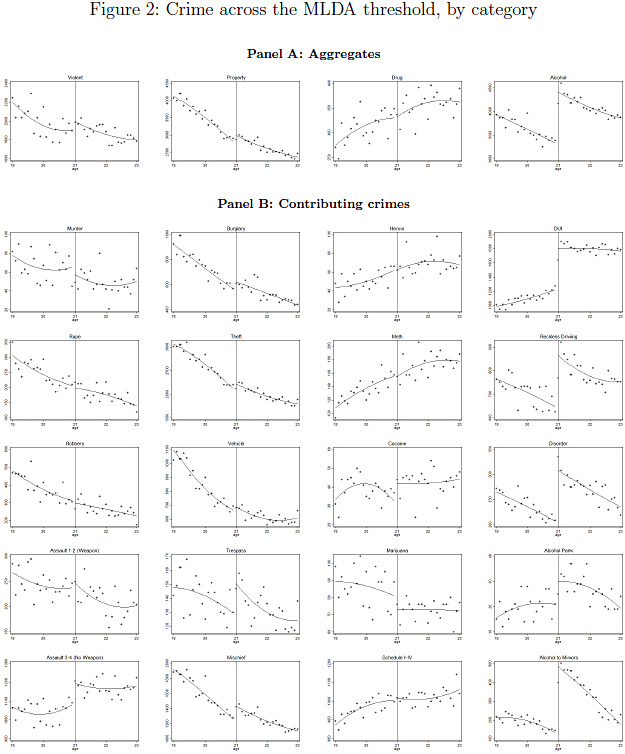The chart below comes from Wonkblog. It’s from a study of crime in Oregon, and shows that at age 21—the legal drinking age in Oregon—crime spikes considerably:
One striking chart shows how alcohol can turn people into criminals
As soon as people turned 21, their likelihood of criminality spiked considerably….The number of charges filed against 21-year-olds was similar to the number for 19-year-olds. In other words, from a criminal-justice standpoint, turning 21 is akin to turning back the clock to your late teens.
The mechanism by which this works is fairly obvious — access to alcohol increases dramatically at age 21. That brings more intoxication, and with it more aggressive, belligerent and criminally stupid behavior.
Sometimes, though, one striking chart isn’t enough. Sometimes you really need to see a whole bunch of them. I apologize for the size and readability of this, but I think it’s best if I show you everything, instead of just picking and choosing. Here’s the complete set of charts from the Oregon study:

Virtually the entire effect is driven not by “more aggressive, belligerent and criminally stupid behavior” in general—violent crime shows no effect at all—but specifically by alcohol-related offenses: DUI/reckless driving, providing alcohol to minors, public disorder, and so forth. The authors also suggest there might be some small effect on assault, trespass, marijuana, and cocaine. But if you take a look at those charts without pre-assuming a change at age 21, you see a very vague scatterplot that doesn’t really suggest anything special at that age.
Bottom line: Legal access to alcohol certainly increases alcohol use, and therefore increases the rate of drunk driving, alcohol-induced public disorder, and providing alcohol to minors. You hardly need a study to tell you that. But on all other kinds of crime? It seems to have barely any effect at all.

















